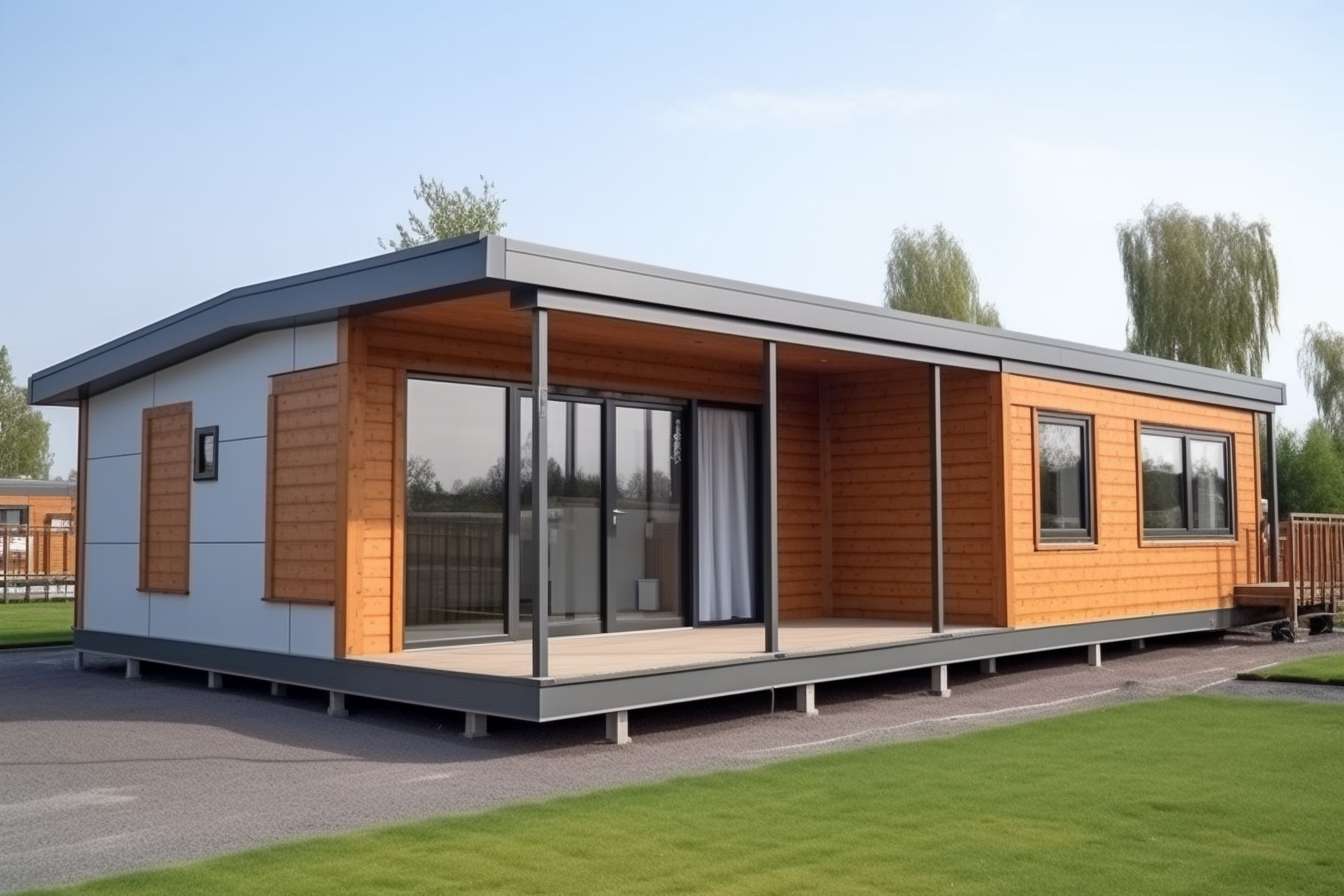Prefabricated Homes: A Modern Solution for Sustainable Living
Prefabricated homes, also known as prefab houses, are revolutionizing the construction industry with their innovative approach to building. These structures are manufactured off-site in controlled factory environments and then transported to their final location for assembly. This method of construction offers numerous advantages, including reduced build time, cost-effectiveness, and improved quality control. As the demand for sustainable and efficient housing solutions grows, prefab homes are becoming an increasingly popular choice for homeowners and developers alike.

Another significant benefit of prefabricated homes is their potential for cost savings. By reducing on-site labor and minimizing material waste, prefab construction can often be more affordable than traditional building methods. The controlled factory environment also helps to prevent weather-related damage and delays, further reducing potential costs. Moreover, many prefab homes are designed with energy efficiency in mind, incorporating features such as high-quality insulation and energy-efficient appliances, which can lead to long-term savings on utility bills.
How do prefab cabins differ from traditional houses?
Prefab cabins offer a unique alternative to traditional house construction, particularly for those seeking a smaller, more versatile living space. These cabins are often designed with a focus on simplicity and functionality, making them ideal for vacation homes, guest houses, or even primary residences for those embracing a minimalist lifestyle. Unlike traditional houses, which are built entirely on-site, prefab cabins are manufactured in sections and then assembled at the desired location.
One of the key differences between prefab cabins and traditional houses is their size and portability. Prefab cabins are typically smaller and can be more easily relocated if needed. This flexibility makes them an attractive option for those who value mobility or want to minimize their environmental footprint. Additionally, prefab cabins often incorporate innovative design features to maximize space efficiency, such as built-in storage solutions and multi-functional furniture.
What materials are commonly used in prefab building construction?
Prefab building construction utilizes a wide range of materials, each chosen for its specific properties and benefits. Wood remains a popular choice for many prefab structures due to its versatility, sustainability, and natural insulating properties. Steel is another common material, prized for its strength and durability. It’s particularly useful in areas prone to extreme weather conditions or seismic activity.
In recent years, there has been a growing interest in using more sustainable and eco-friendly materials in prefab construction. For example, some manufacturers are exploring the use of recycled materials or innovative composites to reduce environmental impact. One such material gaining popularity is polyester-based composites, which offer excellent durability, weather resistance, and insulation properties. These polyester materials can be used in various components of prefab homes, from wall panels to roofing systems, providing a lightweight yet sturdy alternative to traditional building materials.
How does the assembly process work for prefabricated houses?
The assembly process for prefabricated houses is a carefully orchestrated operation that begins long before any components arrive at the building site. Once the prefab sections are manufactured in the factory, they are transported to the construction site, typically by truck. The level of completion of these sections can vary; some may include fully finished interiors, while others might require more on-site work.
Upon arrival at the site, a crane is often used to lift and place the prefab sections onto a pre-prepared foundation. This foundation is usually constructed in advance and must be precisely level to ensure proper assembly. The sections are then carefully aligned and connected, with skilled workers securing them together. This process can be remarkably quick, with some prefab homes being assembled in a matter of days or weeks, compared to the months required for traditional construction.
What are the environmental impacts of prefab building techniques?
Prefab building techniques offer several environmental advantages over traditional construction methods. One of the most significant benefits is the reduction in material waste. In a factory setting, materials can be more precisely measured and cut, leading to less excess and more efficient use of resources. Additionally, any waste generated can often be more easily recycled or repurposed within the factory environment.
The controlled manufacturing process also allows for better energy efficiency in the final product. Prefab homes can be designed with high-performance insulation and airtight construction, leading to reduced energy consumption for heating and cooling. Furthermore, the shorter on-site construction time means less disruption to the local environment and reduced emissions from construction vehicles and equipment.
| Prefab Home Provider | Type of Structures | Key Features | Estimated Price Range |
|---|---|---|---|
| Blu Homes | Modern prefab houses | Energy-efficient, customizable designs | $200,000 - $3,500,000 |
| Method Homes | Custom prefab homes and commercial structures | Sustainable materials, precision engineering | $300,000 - $1,000,000+ |
| Deltec Homes | Round and traditional prefab homes | Hurricane-resistant design, energy efficiency | $150,000 - $900,000 |
| Connect Homes | Modern modular homes | Steel frame construction, quick assembly | $200,000 - $850,000 |
| Plant Prefab | Custom prefab homes and accessory dwelling units | Patented building system, sustainable materials | $170,000 - $1,000,000+ |
Prices, rates, or cost estimates mentioned in this article are based on the latest available information but may change over time. Independent research is advised before making financial decisions.
Prefabricated homes represent a significant shift in the way we approach residential construction. By combining innovative design, efficient manufacturing processes, and sustainable building practices, prefab homes offer a compelling alternative to traditional housing. As technology continues to advance and environmental concerns become increasingly pressing, the prefab industry is likely to play an even more significant role in shaping the future of housing. Whether you’re looking for a compact cabin retreat or a full-sized family home, prefab construction offers a range of options that can be tailored to meet diverse needs and preferences, all while promoting sustainability and efficiency in the building sector.






